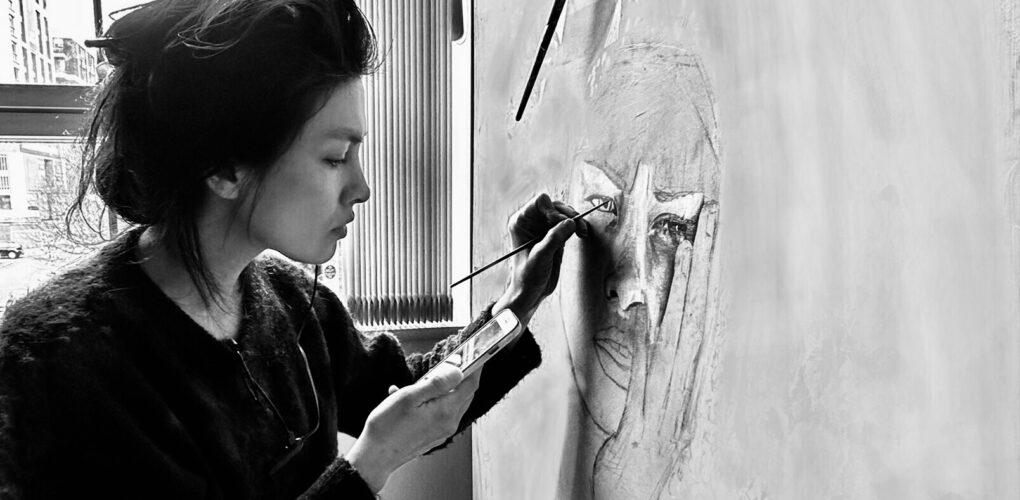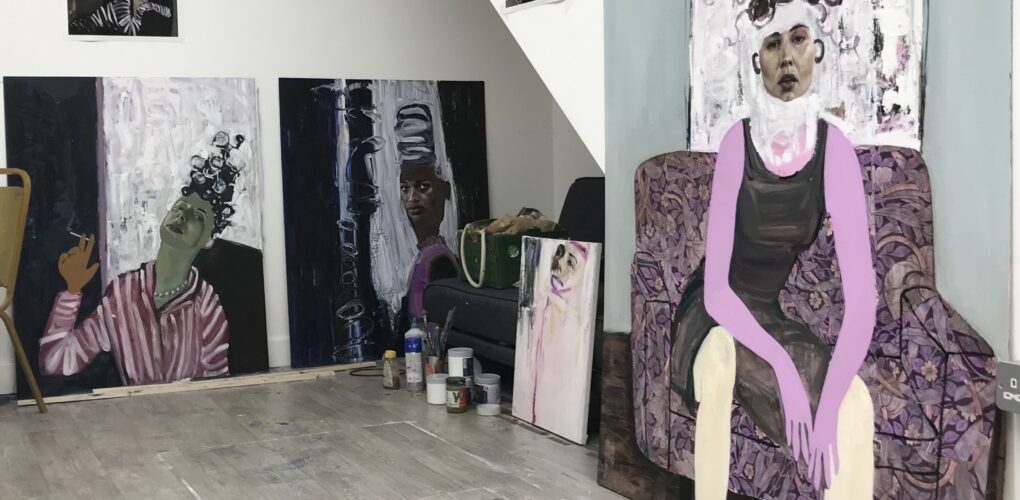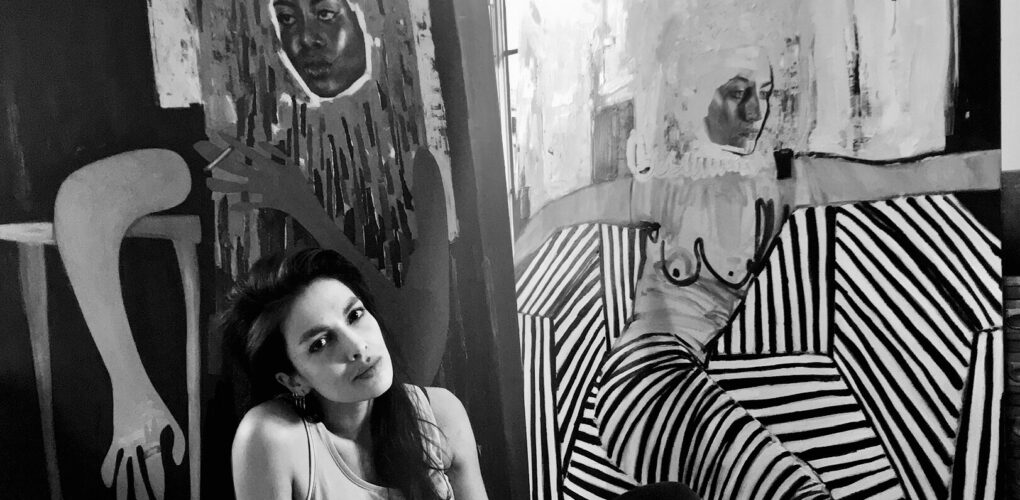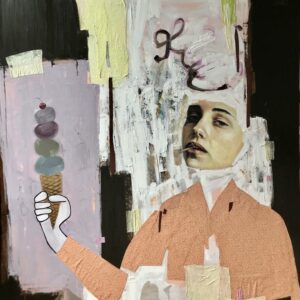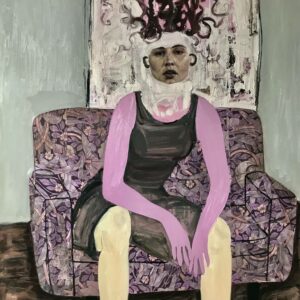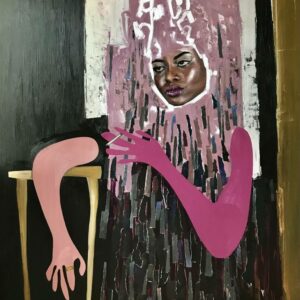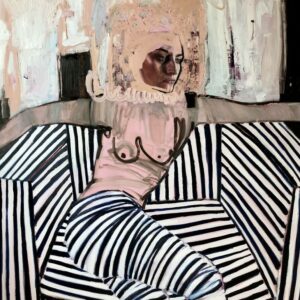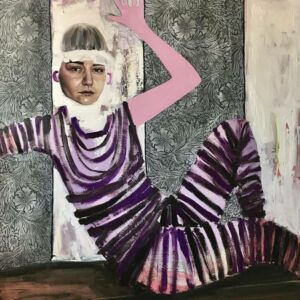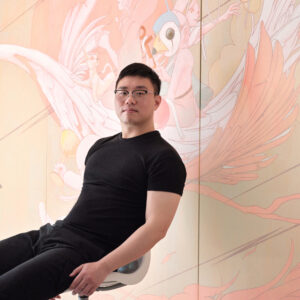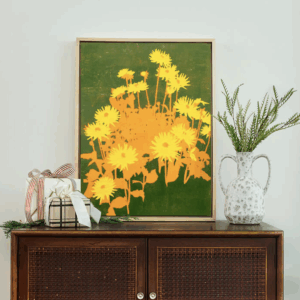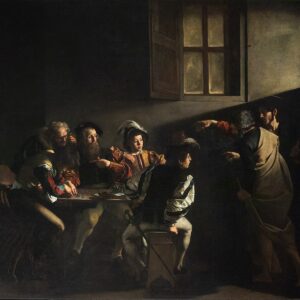One to Watch
 The Human Condition through Art: Perspectives from Louise Howard
The Human Condition through Art: Perspectives from Louise Howard
Lifelong artist Louise Howard creates playful portraits that contrast realism with cartoon elements. Based in London, Louise has exhibited in group and solo shows in the United Kingdom, Australia, and the United States. She has been featured in the Saatchi Art catalog and has participated in The Other Art Fair. Keep reading to hear about Louise’s process and inspirations.
Tell us about who you are and what you do. What’s your background?
I am a British fine art painter who works primarily in oils. Art has been a part of my life practically since the beginning. My mother has painted throughout my life and was a heavy influence on my desire to start painting with oils. My commitment to this medium has remained for over twenty years.
I paint now because I must. Cliched and histrionic, perhaps, but true. The older I get, the more I understand that art––as a concept, as a practice, as a feeling––is a fundamental characteristic of my being and bleeds into so much of my consciousness in so many ways. Coming to terms with this has been an exercise in getting to truly know myself, which, like the art, continues to be a slightly horrifying and sometimes beautiful experience.
What does your work aim to say? What are the major themes you pursue in your work? Can you share an example of a work that demonstrates this?
My explorative process of the human condition is perpetuated by my fascination with it. We surely make for the most intriguing of studies: elusive, fragile creatures, ever limitless in our complexity. I feel comfortable in this place where I study my humans, carving out the echoes of my findings with my paintbrush.
Being a human, it is my ego that dictates what I paint for the most part, as it does for almost every artist. There is an element of myself in all of my works. Women are the main subject matter of my pieces, each projecting a sense of melancholy, a quiet strength, a little attitude, and, in some instances, a slice of humor to cut through the heaviness––all characteristics that resonate with me.
Can you walk us through your process for creating a work from beginning to end?
My paintings always start with the fine art elements of the piece. These take the most concentration, and the rest of the painting is worked around these brushstrokes. The abstract marks are made to be cohesive with the fine brushstrokes and are usually dictated by them. I paint the faces of my subjects in a fine art style; the rest is usually presented in abstract strokes. I choose to represent the face in this particular style because it is the most important part of the body in terms of how humans communicate with one another. It is generally in the face, the features, the subtle nuances of expressions that we can find a connection. This is what we relate to primarily and what we look at to ascertain mood, disposition, and state of being. The rest of the painting is painted generally in abstract brush strokes and loose mark-making. This is to purposefully counter the tightness and precision of the fine art brush strokes and allow for a lightness and, in some instances, a little levity to permeate the overall piece.
Who are your biggest influences and why?
My biggest influences on my art are usually a combination of artists whose work I admire. This includes Lucian Freud and Jenny Savile, as well as the stuff that naturally fuels my soul and brain, be that general neuroticism, emotional unease, or a perpetual questioning of things.
How do you hope viewers respond to your works? What do you want them to feel?
I have no interest in pushing an agenda or message onto the viewer of my work. I much prefer for people to take whatever they want from the paintings, to draw their own conclusions, and to conceive of their own ideas behind each one. That is more fulfilling for me as the artist than to, perhaps egotistically, deliver a certain message through my art, eager for my thoughts to be heard. That has never been a goal. For me, art is a subjective, personal, wonderful thing. It is not for me to tell you what you are to see or read in the works you are looking at, even if I created them. They are for you to take what you choose from them.
Who is your favorite artist?
My favorite artist is Lucian Freud, and has been for nearly 20 years. In general, his works are shocking, beautiful, grotesque, awesome, and exceptional. To be able to evoke such emotions from any artwork, for me, truly denotes brilliance.
If you could only have one piece of art in your life, what would it be?
“Benefits Supervisor Sleeping” by Lucian Freud, because it elicits all the feelings described above.
